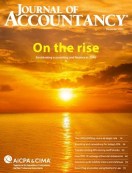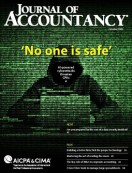- newsletter
- Extra Credit

Practical ways to develop students’ critical thinking skills
Try these tips and exercises to improve your students’ analytical abilities.
Please note: This item is from our archives and was published in 2018. It is provided for historical reference. The content may be out of date and links may no longer function.
Related
How to boost your students’ communication skills
Help students improve their study skills
Can your students evaluate the information they’re given — drawing conclusions and determining between useful and less relevant information in order to solve a problem or make a decision? These types of critical thinking skills are essential for today’s accounting graduates, especially given that the CPA Exam now places a stronger emphasis on critical thinking.
Yet accounting faculty regularly hear from employers that college graduates are not equipped with these necessary critical thinking skills when they enter the workforce, said Gail Wright, CPA, instructor of accounting at York College of Pennsylvania. The 2016 Workforce-Skills Preparedness Report by PayScale found that 60% of managers across career fields feel new graduates lack critical thinking and problem-solving skills.
It takes time for students to acquire critical thinking skills, said Susan Wolcott, CPA, Ph.D., a college instructor and co-founder of research, consulting, and educational resource development firm WolcottLynch. In fact, in an analysis she performed while teaching at the University of Denver, Wolcott found that students took about two academic years to develop the most essential critical thinking skills.
“It’s something that doesn’t happen quickly,” she said. “Faculty want to see immediate results, and quite frankly, that isn’t realistic.”
Cognitive literature, Wolcott said, indicates that most students in higher education, including many at the master’s level, tend to operate at one of two cognitive levels. Students may be “confused fact-finders,” who try to find “a single, correct answer” rather than analyze ambiguous information, or they are “biased jumpers,” who jump to a conclusion based on their initial ideas or biases and look for information to support that conclusion. (Follow the links for short videos by Wolcott explaining the two cognitive patterns.)
“Students who operate at these two cognitive stages have very limited ability to deal with complexity,” she said.
When students do attain a higher level of critical thinking, though, they also gain a more thorough understanding of the subject matter, Wright said.
“You can immediately see when the lightbulb clicks,” she said. “They are better able to make decisions, to make connections, and to communicate what they understand.”
Though it can take time for students’ critical thinking skills to take hold, faculty can facilitate the process. Here are some tips and practical exercises to try:
Coordinate with colleagues. Faculty need to have conversations among themselves, and they should ensure their department has a consistent and thoughtful approach to teaching critical thinking skills, Wolcott said.
She recommends that critical thinking skills should be taught in introductory classes. “If we fail to introduce critical thinking in early courses, we’re setting our students up for slower progress later,” she said, noting that students will struggle to learn more theoretical concepts in intermediate courses if they aren’t introduced to critical thinking skills in their foundational courses.
Get to the root of an issue. When Wright teaches tax, she and her students look at the intent of a tax law. They examine the discussion that went into the implementation of a tax law and look at committee reports for various code sections.
In doing so, she encourages students to become more analytical.
“It gets students thinking about why certain changes were made,” Wright said, and leads them to consider questions such as “Why are we doing it in this manner?” and “Why is this way better?”
This questioning leads to the deeper understanding and analysis that are key to developing critical thinking skills, she said.
Think small when using case studies. Full case studies can be too high-level for undergraduates, Wolcott said. Instead, she uses mini-cases in her classes. These are half- to full-page case studies that don’t overwhelm students but do give them a real-life scenario.
“The biggest difference between long and short cases is the complexity,” Wolcott said. “To develop stronger critical thinking skills, most students need to be given assignments that are challenging but without being overly complex. I have found that shorter cases work well with students at the ‘confused fact-finder’ and ‘biased jumper’ cognitive stages described above.”
Wolcott authors many of her own mini-cases, but said a number of journals also publish shorter cases that would be appropriate for undergraduates. Those include: Issues in Accounting Education, Accounting Perspectives, and the Journal of Accounting Education.
Encourage communication and trust. Develop a relationship with your students so they feel comfortable talking with you and with one another, said Forrest Thompson, CPA, CGMA, Ph.D., associate professor of accounting at Albany State University.
“I’m constantly asking questions,” Thompson said.
He also requires students to give presentations. He finds this breaks the ice as students are encouraged to get up in front of their professor and their peers.
“When you can talk about an idea and present it to your classmates, it shows you have more critical understanding of the subject matter,” he said.
Ask students open-ended questions. When possible, include questions on exams that require students to think critically and develop an answer, Wolcott said. (This may not always be possible in larger classes, she acknowledged.)
“We need to get students to do more than find a single, correct answer,” she said.
Use a rubric to ensure consistency. Wolcott uses rubrics to ensure consistency in her scoring and feedback to students. She shares examples of past rubrics with students so they’re not surprised by her feedback.
“I can point to the rubric and say, ‘Here’s what I saw in your paper, and here’s what needed to be there to move to a higher level,’” Wolcott said. “And then we can have a conversation about what would be involved to move to that higher level.”
Wolcott said this rubric also helps her design the mini-cases she writes for her classes.
“Because I’ve consistently used a rubric, I make fewer mistakes,” she said. “It helps me in designing the assignment as well as grading it.”
Lea Hart is a freelance writer based in Durham, N.C. To comment on this article or to suggest an idea for another article, contact senior editor Courtney Vien.



















